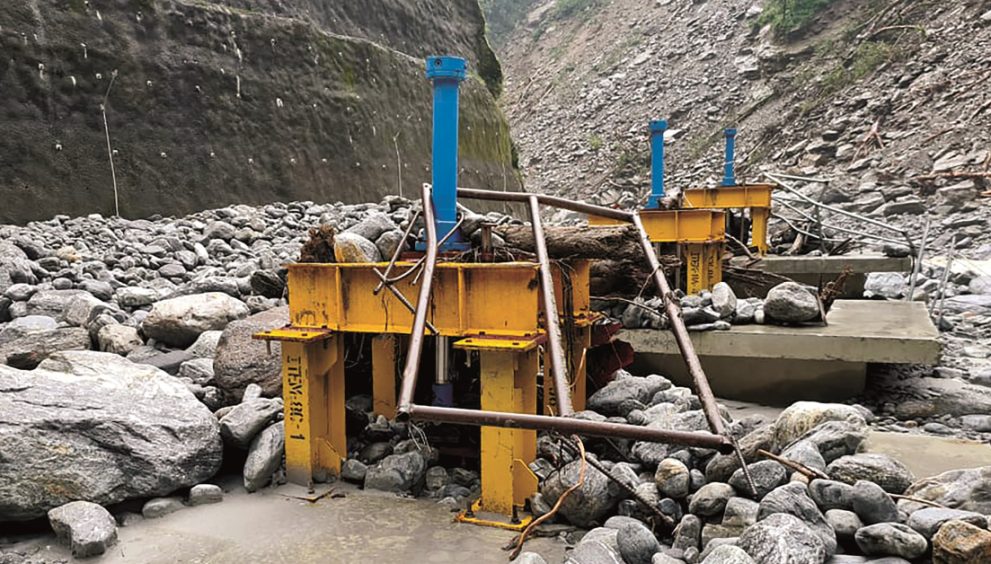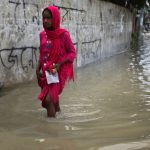Kathmandu, Nepal:
As the COP-28 organizes in Dubai, Nepal grapples with a critical water crisis that has become a stark illustration of the global climate emergency. While the Nepali government prioritizes carbon dioxide mitigation despite the country’s negligible carbon footprint, the crisis highlights the interconnectedness of water with various aspects of life and underscores the need for urgent adaptation strategies.
The Melamchi Project’s Unfulfilled Promise
The Melamchi water supply project is super important for Nepal. It took 22 years to finish, finally completing in 2021. The big goal was to give fresh water to the folks in Kathmandu, Nepal’s capital. But, even after waiting for so long, the people in Kathmandu didn’t get the water they were hoping for.
Just two months after they started getting water, on June 15, 2021, there were terrible floods. These floods messed up everything and stopped the water supply. The project cost about USD 302 million, with the Asian Development Bank funding it. According to Rajendra Prasad Panta, who is a senior engineer on the project, he can’t say when they can start giving water to Kathmandu. He explained, “We lost a lot of infrastructure, so we can’t promise when Kathmandu will get water.” He added, “After the flood on June 15, 2021, we managed to provide temporary water, but this year’s floods messed things up again.”
The main idea was to give 1700 million liters of water every day to Kathmandu from this project. But all the plans the Nepal government had got ruined in just one night because of the flood.
Climate experts connect the unusual floods in Melamchi to the impact of climate change. Shiva Baskota, a senior geologist from the Department of Mines and Geology, studying Melamchi’s estuarine area, Pemdang River, and Vemathang, points to excessive rainfall at high altitudes as the primary cause of the flooding in the Melamchi River. According to him, “Studies have indicated that the flooding in Melamchi resulted from high-altitude rainfall and subsequent landslides, leading to massive landslides in the Melamchi and Pemdang rivers.”
Because there are no weather and water measuring stations in the high areas of Melamchi, the amount of rainfall is not yet known. Local elders, however, claim that such a significant flood has not happened in Melamchi for nearly 100 years.
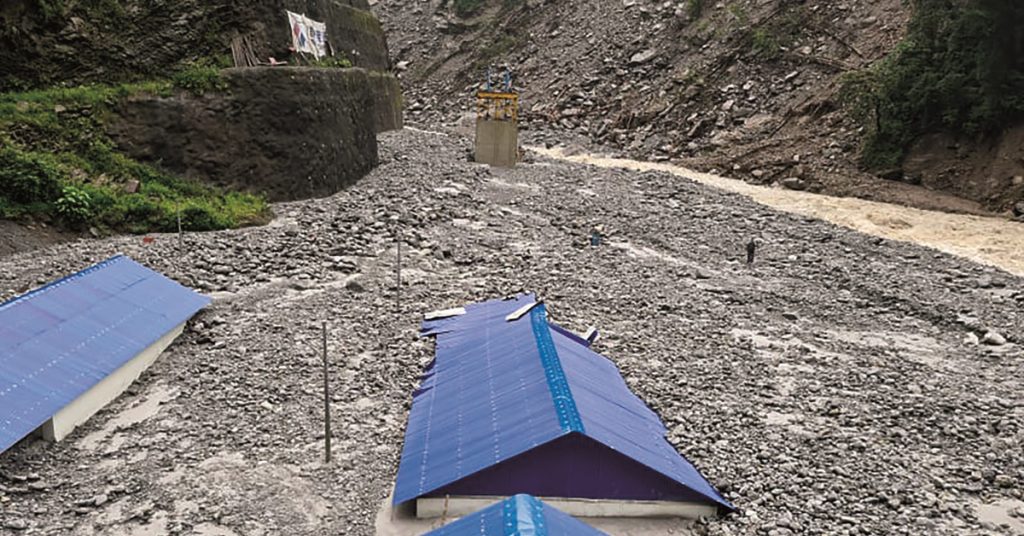
Water: The Center of Climate Change
The Earth’s temperature is rising globally, it’s causing unusual weather like heavy rain, floods, droughts, and fires. Nepal is also facing these climate disasters. Right now, in Dubai, United Arab Emirates, the 28th Conference of the Parties to the United Nations Framework Convention on Climate Change is happening. They’re discussing climate change and the problems it brings.
Experts say that water is a big deal when it comes to climate change. Ngmindra Dahal, who is the President of Nepal Pani Sadupoyog Foundation, thinks that water is the main focus of climate change. He believes that if we make water management and water a big part of the conversation about climate change, we can find real solutions. Dahal says, “Climate change is a water problem. After air, water is the most important thing for humans. We need water everywhere, and it’s impossible to carry it wherever we go.”
But we all need water every day, from the moment we wake up. Water is crucial for everything, from drinking to cooking. Manohara Khadka, the Nepal representative of the International Water Management Institute, (IWMI) says water is connected to everything, including food production, electricity development, and biodiversity. She points out, “Water is a must for development, and there’s no area where water isn’t needed. It’s disappointing that water isn’t a priority.”
Climate change is hitting water the hardest. The changes in weather patterns are affecting health, agriculture, and energy because of too much rain and long periods of drought.
According to the Millennium Development Goals 2022 report, almost two billion people worldwide still lack access to clean drinking water. The United Nations reports that only 0.5 percent of the world’s water is suitable for drinking. However, recent climatic disasters have severely impacted its distribution system. The World Meteorological Organization states that over the past 20 years, water storage has decreased at a rate of 1 centimeter per year due to changes in soil moisture, snow, and ice melting rates. Water resource expert Ajay Dixit warns that decreasing water storage and the drying up of water sources pose a threat to human life.
“In Nepal, there’s a belief that water primarily means hydropower projects and the extraction of hydropower from water leads to prosperity. However, this perspective is incorrect,” warns Dixit. “Without water, human life simply cannot survive.”
UNICEF reports that between 2001 and 2018, 74 percent of natural disasters worldwide were water-related. The World Bank notes that in Nepal, 68 percent of natural disasters are linked to water, with floods accounting for 47 percent and landslides for 21 percent.
The Inter-Governmental Panel on Climate Change (IPCC) predicts that the rise in temperature, abnormal rainfall, and prolonged droughts will continue to increase in the future. According to the Asian Development Bank, floods in Nepal result in 175 deaths annually, causing an estimated damage of about USD 20 million to the country’s economy. The Ministry of Home Affairs records show that from 1971 to 2015, floods and landslides led to the loss of 9,176 lives.
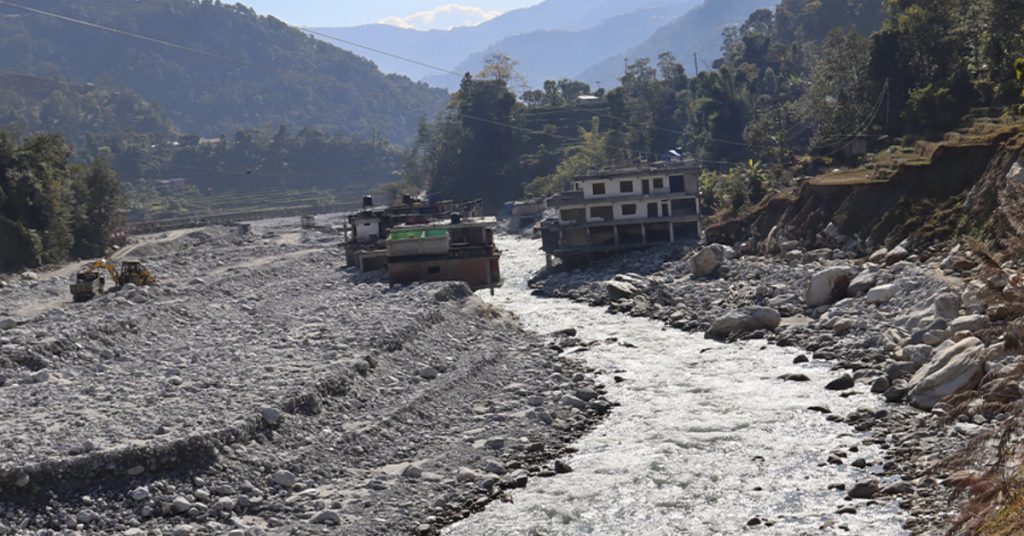
Energy Sector Faces the Impact
The hydropower sector, a key source of energy, has been adversely affected by the unnatural decrease in water levels in recent years. In the first week of June last year, 13 hydropower projects in the Koshi River watershed area were completely damaged due to abnormal rains in eastern Nepal and subsequent floods. Ganesh Karki, president of the Independent Power Producers Association, reveals that the one-night flood resulted in a loss of about USD 90 million.
The changing climate has brought about a dual challenge—increased incidents of floods and landslides due to abnormal rainfall, and a simultaneous depletion of water resources owing to prolonged drought. These phenomena have profound impacts on agriculture, biodiversity, and human health. The World Bank highlights that 80 percent of the global population faces a high risk of food insecurity due to climate change, with Africa and South Asia, including Nepal, identified as particularly vulnerable. The increasing frequency of climate change-induced phenomena, such as El Niño, is anticipated to push substantial populations below the poverty line globally.
For instance, the El Niño-induced drought of 1993 led to a 10 to 50 percent reduction in corn production in Brazil, the United States, and Africa.
According to the World Food Programme, in 2022, 3.33 billion people across 78 countries faced food insecurity, a significant rise from the pre-COVID-19 figure of 2 billion. The National Strategic Action Plan for Disaster Risk Reduction, Nepal (2018-2030) underscores the vulnerability of Nepal’s agricultural sector to drought, with 38 percent of arable land equipped with irrigation facilities. The recent El Niño-related drought has left many fields in the Terai region barren, adversely affecting rice cultivation.
The Terai and West Hills, including Mustang and Manang across the Himalayas, are identified in the Action Plan (2018-2030) as more susceptible to drought, particularly from November to June. This extended dry period has depleted water sources and groundwater, affecting more than 70 percent of water sources in the West Hills watershed area.
A study by the ‘Youth Network for Environment’ under a water project supported by the US Agency for International Development (USAID) revealed a significant decrease in water levels in 4,222 water sources across various watersheds in the western hills.
The impact of increasing drought extends to hydropower projects, a crucial source of energy. Floods and insufficient water in the dry season have led to a 30 to 35 percent decrease in electricity production from projects connected to transmission lines, according to the Nepal Electricity Authority.
The adverse effects are evident in projects like the 8.5-megawatt Upper Hewakhola Hydropower, which experienced a nearly one million-kilowatt reduction in electricity production during winter.
The repercussions are not limited to the energy sector; they also affect communities. Access to safe drinking water has become scarcer due to climate change, especially in rural areas. Women and children, in particular, face health risks as they travel long distances to fetch water from dwindling sources.
Dr. Manohara Khadka, the Nepal representative of the International Water Management Institute, emphasizes the health impact on women and children in rural areas, noting that the drying up of water sources forces them to travel long distances, putting their well-being at risk.
Shifting Focus to Adaptation:
The need for urgent action to address these climate-induced challenges is apparent. It is crucial to implement sustainable measures that safeguard water resources, promote climate-resilient agriculture, and mitigate the impact on vulnerable communities. Concerted efforts at local, national, and international levels are imperative to building resilience and adapting to the changing climate.
Water experts assert that prioritizing water is crucial, blaming both climatic factors and governmental policies for the challenges in water management. Ngmindra Dahal, President of the Nepal Water Utilization Foundation, criticizes past government decisions, highlighting the problems caused by overlooking alternative options before channeling Melamchi water to Kathmandu. He emphasizes the potential of rainwater management as a viable solution.
According to water resource expert Ajay Dixit, the government’s focus on reducing carbon emissions to address climate change is misplaced. Dixit argues that Nepal’s contribution to emissions is minimal and advocates for a shift towards adaptation. Stressing the interconnectedness of water with various aspects of life, he underscores the need to center adaptation efforts around water. “With rising temperatures, water is the most adversely affected domain, making it imperative for water to be the focal point of our adaptation strategies,” Dixit emphasizes.
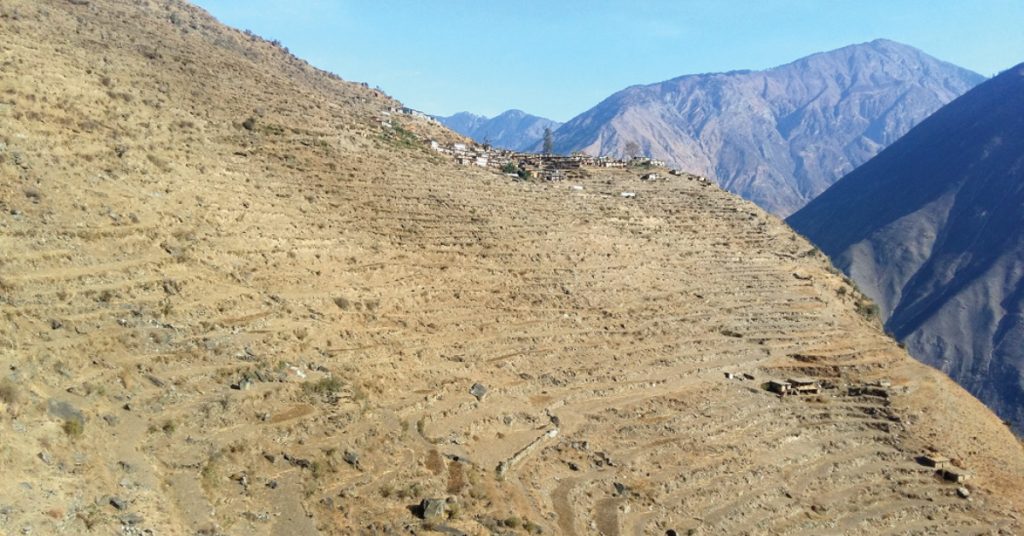
COP-28: A Call for Global Action:
COP-28 presents a crucial opportunity for the international community to address the global water crisis and support countries like Nepal in their struggle to adapt to a changing climate. As we face the consequences of climate change, it is clear that prioritizing water management and building resilience are not just local challenges but global responsibilities.
As the world focuses on climate change, it is imperative to remember that water is at the heart of the issue. By learning from Nepal’s experience and prioritizing water management in climate action, we can build a more resilient future for all.
(Mukesh Pokhrel: Environment journalist from Nepal, Member: Oxford Climate Journalism Network, Fellow: Earth Journalism Network)
